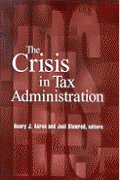The individual alternative minimum tax (AMT) was originally designed to limit the amount of tax sheltering that taxpayers could pursue and to assure that high-income filers paid at least some tax. The current AMT, however, has strayed far from those original goals. Under current law, the tax will affect over 23 million taxpayers in 2007—many of them solidly middle-class—and mainly for reasons that have little or nothing to do with what most people would consider tax sheltering.
One policy response would be to extend the temporary AMT provisions that expired at the end of 2006. This would keep the number of AMT taxpayers at about 4 million for another year, but it would cost more than $40 billion in 2007 alone and would grow more expensive in subsequent years. For these and other reasons, many policy makers, including House Ways and Means Committee Chairman Charles Rangel, Senate Finance Committee Chairman Max Baucus, and Finance Committee Ranking Member Charles Grassley have proposed permanent reform or repeal of the AMT.
This brief examines a variety of implications of AMT repeal or reform and an array of options for offsetting the revenues lost under such options. It begins with a description of the taxpayers affected by the AMT and an explanation of the dramatic growth projected for the tax as the context for evaluating reform options.
Read More (PDF – 255KB)
The Brookings Institution is committed to quality, independence, and impact.
We are supported by a diverse array of funders. In line with our values and policies, each Brookings publication represents the sole views of its author(s).







